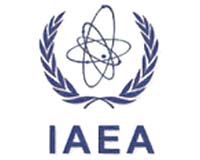 |
Bethesda MD (SPX) Sep 14, 2010 USEC has announced that the Megatons to Megawatts program has eliminated the equivalent of 16,000 nuclear warheads by recycling 400 metric tons of weapons-grade uranium from Russia into low enriched uranium used as fuel in commercial nuclear power plants. The Megatons to Megawatts program is a unique, commercially financed government-industry partnership in which 500 metric tons of Russian weapons-grade uranium downblended to low enriched uranium is being supplied to USEC for delivery to USEC's customers as commercial reactor fuel. "For more than 15 years, USEC and TENEX have cooperated in fueling America's nuclear reactors while reducing the threat of nuclear proliferation for the entire world," said John K. Welch, USEC president and chief executive officer. "Our bilateral efforts have made the world safer, benefited the American consumer, and reduced greenhouse gas emissions." USEC's subsidiary, United States Enrichment Corporation, as executive agent for the U.S. government, and JSC "Techsnabexport" (TENEX), acting for the Russian government, implement the program, which is on track to complete the downblending of the equivalent of 20,000 nuclear warheads into commercial nuclear fuel by the end of 2013. USEC has paid the Russian Federation more than $6.7 billion for the SWU (separative work units) component of the low enriched uranium delivered since 1995. The total amount paid to Russia through the 20-year life of the contract is expected to exceed $8 billion. USEC also supplies natural uranium to TENEX in exchange for the uranium component of the low enriched uranium. The U.S. Department of Energy's National Nuclear Security Administration (NNSA) is the U.S. lead agency on the Megatons to Megawatts program. Through its HEU Transparency Program, NNSA works to reduce nuclear risks by monitoring the conversion of Russian highly enriched uranium at several sites in Russia. The fuel generated to date could produce enough electricity to meet the demand for a city the size of Boston or Seattle for approximately 610 years and is the energy equivalent of more than 9.8 billion barrels of oil or nearly three years of U.S. crude oil imports.
Share This Article With Planet Earth
Related Links USEC Nuclear Power News - Nuclear Science, Nuclear Technology Powering The World in the 21st Century at Energy-Daily.com
 IAEA picks Belgian as new chief inspector: diplomats
IAEA picks Belgian as new chief inspector: diplomatsVienna (AFP) Sept 13, 2010 UN atomic watchdog chief Yukiya Amano on Monday chose Belgian nuclear expert Herman Nackaerts as the agency's new chief inspector, replacing Olli Heinone who resigned last month, diplomats said. Amano officially notifed the 35-member board of the International Atomic Energy Agency of his choice for four new deputy director generals at the traditional September meeting which began in Vienna M ... read more |
|
| The content herein, unless otherwise known to be public domain, are Copyright 1995-2010 - SpaceDaily. AFP and UPI Wire Stories are copyright Agence France-Presse and United Press International. ESA Portal Reports are copyright European Space Agency. All NASA sourced material is public domain. Additional copyrights may apply in whole or part to other bona fide parties. Advertising does not imply endorsement,agreement or approval of any opinions, statements or information provided by SpaceDaily on any Web page published or hosted by SpaceDaily. Privacy Statement |